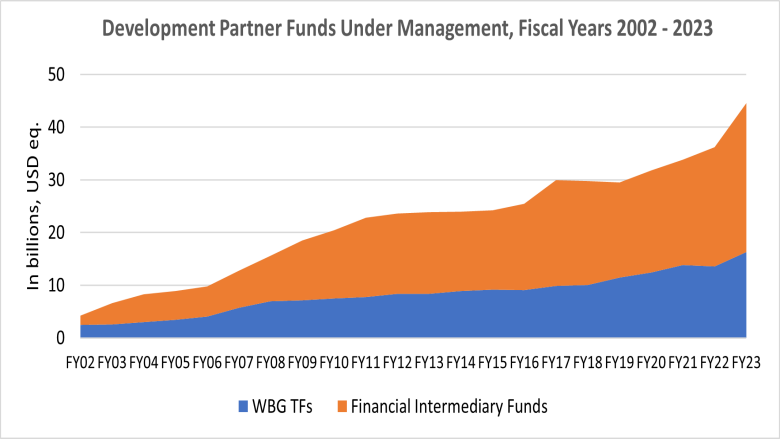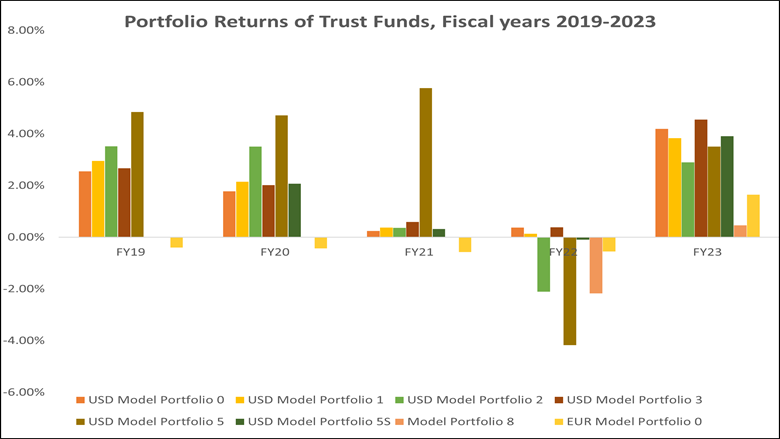The World Bank receives contributions to trust funds and Financial Intermediary Funds (FIFs) from development partners. These contributions are invested in capital markets until the funds are disbursed to final recipients for development projects. Upon receipt of development partners’ contributions in national currencies, funds are primarily converted into United States Dollars, which is the main currency of eventual disbursements to recipients.
At the end of June 2023, the assets under management (AUM) for trust funds and FIFs were $44.6 billion. This represents a compound annual growth rate (CAGR) of 6.5% since June 2013 when AUM were $23.8 billion. The consistent growth in AUM reflects the confidence vested by the development partners in the financial solutions provided by the Bank to address complex development challenges.

